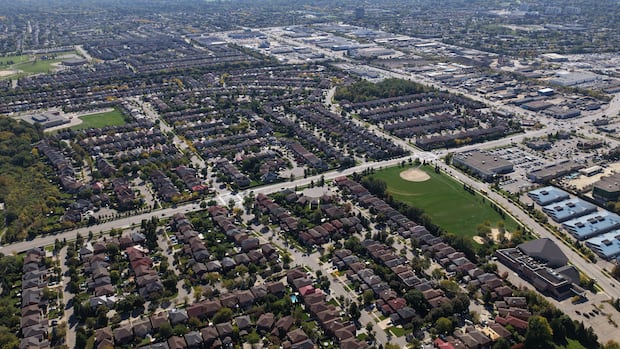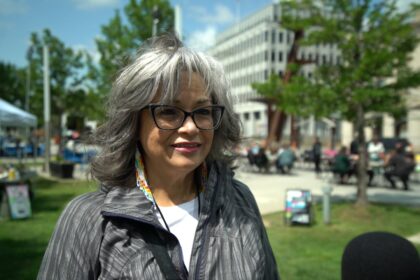TorontoOntario’s sweeping Bill 60 will consolidate planning power around the minister of housing, experts say, as the government mulls more amendments that would undercut municipalities’ roles in shaping their communities. Experts say changes meant to speed up homebuilding may create uncertainty in the industry Lane Harrison · CBC News · Posted: Nov 20, 2025 4:00 AM EST | Last Updated: 5 hours agoListen to this articleEstimated 5 minutesThe audio version of this article is generated by text-to-speech, a technology based on artificial intelligence.When it comes to the planning act, the omnibus bill would make it so the minister’s planning decisions no longer have to conform to the provincial planning statement. (Patrick Morrell/CBC)Ontario’s sweeping Bill 60 will consolidate planning power under the minister of housing, experts say, as the government mulls more amendments that would undercut municipalities’ roles in shaping their communities. Premier Doug Ford’s government tabled Bill 60, dubbed the Fighting Delays, Building Faster Act, in late October, envisioning changes to the provincial planning act. In briefing notes, the province says the change will allow the minister to make “faster and more strategic decisions aimed at increasing housing supply.”The bill has already drawn criticism from a swath of advocates and cities, concerned about its effects on the residential tenancies act.But when it comes to the planning act, the omnibus bill would make it so the minister’s planning decisions no longer have to conform to the provincial land-use planning statement. The statement is meant to guide municipalities on meeting Ontario’s development goals, with guidance on providing a mix of housing options and protecting the environment.“What this does is basically bypass this co-ordination, the significant expansion of ministerial discretion now is going to reduce the role, the autonomy and the policy tools of municipalities,” said Luisa Sotomayor, director of planning at the University of Toronto’s department of geography and planning. WATCH | Why some renters are avoiding new builds:Why some renters are avoiding new buildsWhether it’s the lack of rent control or impractical floor plans, some Toronto renters say they’re swearing off new buildings. Naama Weingarten has more on why they say new isn’t always better. Sotomayor says she’s particularly concerned about long-term planning, as municipalities have carefully crafted policy to protect employment areas or environmentally sensitive lands. She said this expansion of discretion could apply to lands the province owns.“So let’s say near GO stations or transit corridors and surplus government properties, development could be approved with no requirement for public consultation,” she said. Changes meant to provide ‘faster’ decision makingIn briefing notes, the province says all of the minister’s planning decisions will be posted publicly “to ensure continued transparency.”But neither the bill nor the briefing notes explicitly list what decisions the changes are meant to impact, but do reference decisions on “official plans.” Official plans are municipal documents that usually have to be approved by the province. Among other things, the plans spell out where housing, offices and shops can be. Bryan Purcell, vice-president of policy and programs at the non-profit low-carbon investment agency the Atmospheric Fund, said the provincial planning statement creates confidence for developers around Ontario’s priorities. Housing Minister Rob Flack has said the bill will simplify the planning process. (Dalson Chen/CBC)“So when we enable decisions to be made without consistency with that, then it calls into question the foundation of people’s expectations,” he said. “It becomes something that actually gives pause to investment in housing construction because it means that people don’t really know what the rules of the game are.” Municipal Affairs and Housing Minister Rob Flack said in October that the bill will simplify the planning process. “This bill is a strong bill,” Flack said. “It’s creating the conditions to get more homes built faster. We’re creating stability. We’re creating predictability in the market.”Province looks to remove green development standardsFor Purcell and the Atmospheric Fund, who work to help the Greater Toronto Area become net-zero, a section of the briefing notes about green development standards is a concern. It says in the future, the ministry wants to remove green development standards that apply on the lot outside a given building under construction to “cut red tape and lower home and building costs.” He said that could create more uncertainty in the marketplace as developers might wait for more favourable rules for certain projects. Toronto green standards for development include things like bike parking and electric vehicle charging for certain projects. In conjunction with Bill 60, the province has already done away with Toronto’s green roof bylaw.WATCH | Ontario axes Toronto’s green roof bylaw:Ontario uses new bill to scrap Toronto’s green roof bylawOntario is axing Toronto’s green roof bylaw, which made it mandatory for green roofs to be built on new commercial, institutional and residential developments. CBC’s JP Gallardo has the reaction from elected officials and community members. Adopted in 2009, the bylaw made it mandatory for green roofs to be built on new commercial, institutional and residential developments with a minimum gross floor area of 2,000 square metres. The bylaw led to more than 1,200 green roofs across Toronto, according to the city.The roofs are meant to provide urban cooling and reduce flooding, as the city sees intense rain events brought on by climate change. “That really is undoing a lot of progress made on a measure that’s become accepted and common in new construction in Toronto and increasingly in other areas,” Purcell said. The province is holding online consultations on the future of enhanced development standards, which include green standards. In addition to bike parking, examples of the green development standards under the province’s microscope include native tree planting and permeable pavement.Sotomayor, with the University of Toronto, said the province is looking to standardize development without thinking about the impacts of climate change and the considerations those impacts create. “This is a huge concern and should be a huge concern for planners.”ABOUT THE AUTHORLane Harrison is a reporter with CBC Toronto who primarily covers municipal and provincial politics. Born and raised in Toronto, he joined CBC in 2022 as a Joan Donaldson Scholar after an internship with the Globe and Mail. You can reach him at lane.harrison@cbc.caFollow Lane on Twitter
Thursday, 20 Nov 2025
Canada – The Illusion
Search
Have an existing account?
Sign In
© 2022 Foxiz News Network. Ruby Design Company. All Rights Reserved.
You May also Like
- More News:
- history
- Standing Bear Network
- John Gonzalez
- ᐊᔭᐦᑊ ayahp — It happened
- Creation
- Beneath the Water
- Olympic gold medal
- Jim Thorpe
- type O blood
- the bringer of life
- Raven
- Wás’agi
- NoiseCat
- 'Sugarcane'
- The rivers still sing
- ᑲᓂᐸᐏᐟ ᒪᐢᑿ
- ᐅᑳᐤ okâw — We remember
- ᐊᓂᓈᐯᐃᐧᐣ aninâpêwin — Truth
- This is what it means to be human.
- Nokoma












